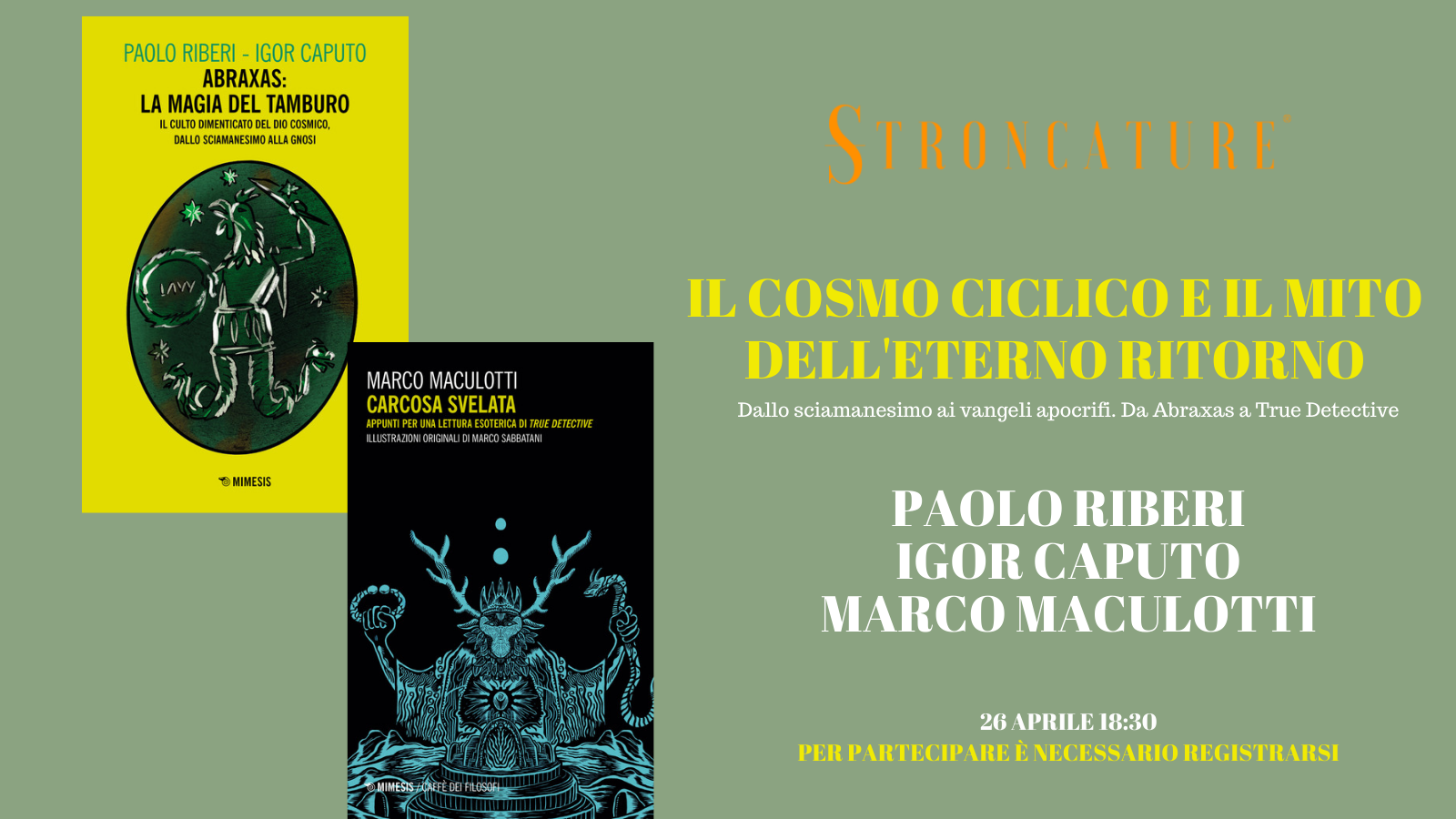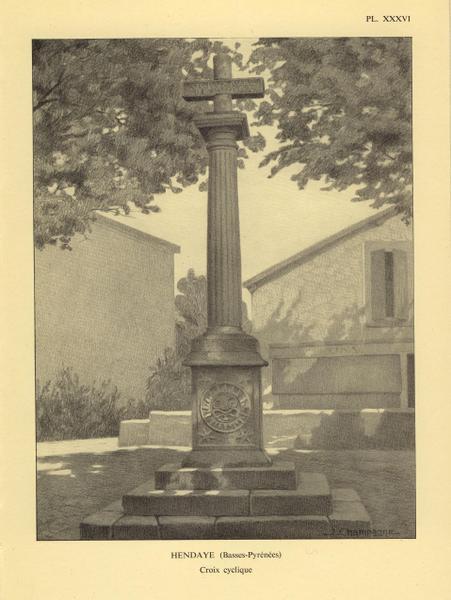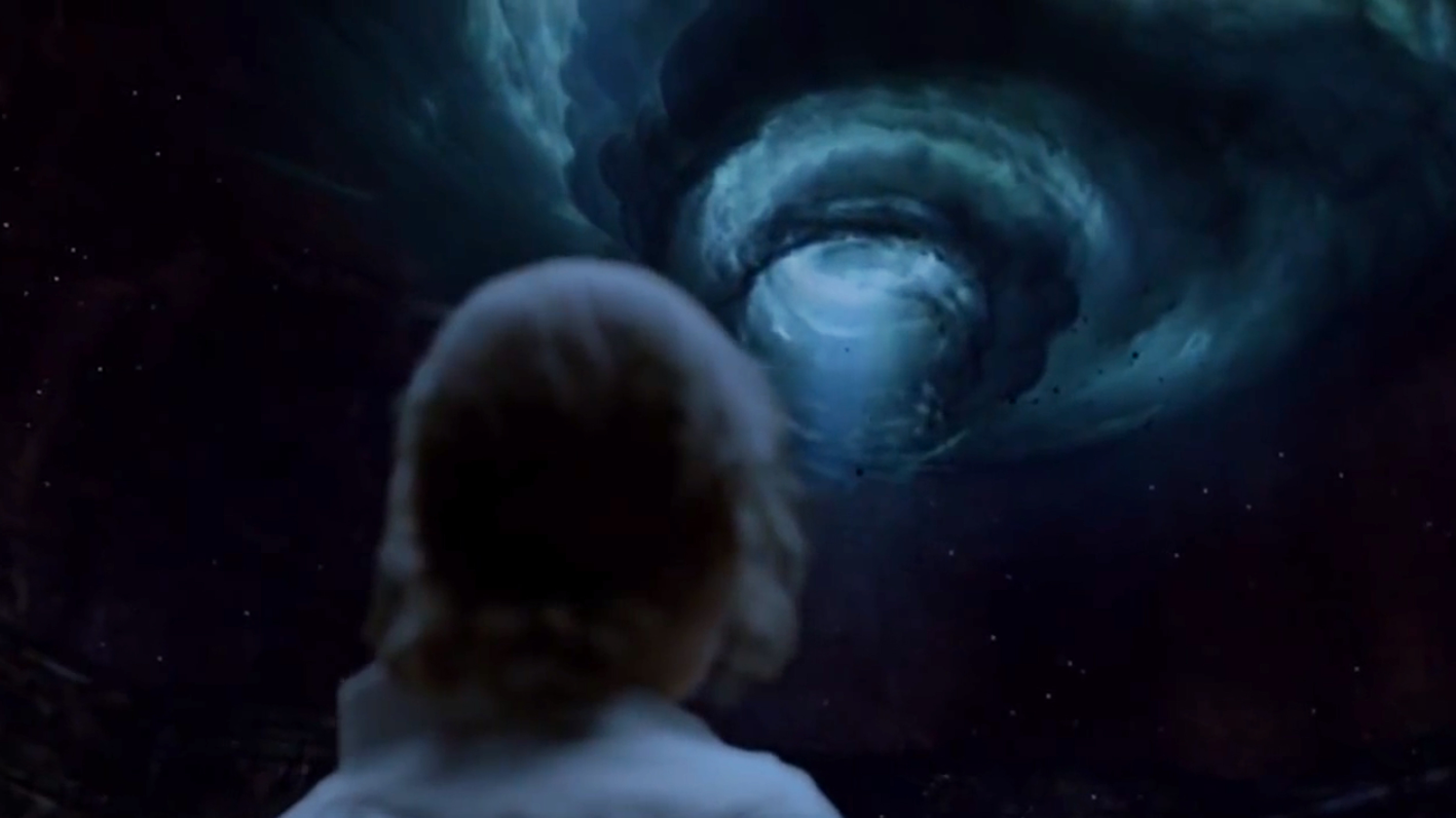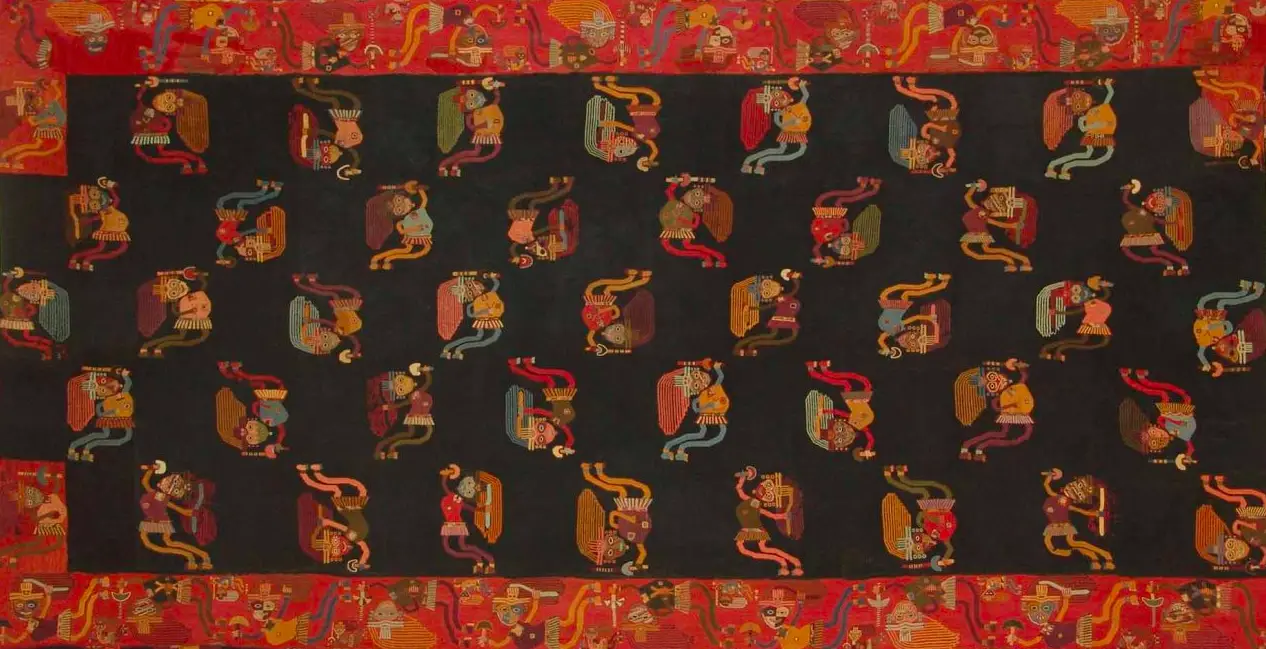Tag: Cyclic time
“The cyclical cosmos and the myth of the eternal return”, on Stroncature
Monday 26 April from 18:30 pm Stroncature hosts the presentation of two volumes: the first, “Abraxas: the magic of the drum” (Mimesis) by Paolo Riberi and Igor Caputo; the second, “Carcosa unveiled” by Marco Maculotti (Mimesis). The authors dialogue on the two texts. Moderated by Nunziante Mastrolia.
Hendaye's Cyclical Cross: a coded calendar?
The so-called "Cyclical Cross" is an enigmatic monument located in the Basque town of Hendaye, in the French Pyrenees Atlantiques. Its esoteric symbolism was analyzed in the XNUMXs by Fulcanelli, the "last of the Alchemists", who saw in the Latin inscription on the arms of the cross and in the bas-reliefs on its pedestal the revelation of the Four Ages of humanity and the prophecy of the cataclysm next future that will come to put an end to the deadly Iron Age.
"True Detective", between fantastic realism and metapolitics
Attached you can listen to our speech at last night's videoconference, "Metapolitics of TV Series" for GRECE Italie, focused on the esoteric implications of Nic Pizzolatto's first season "True Detective", which we have already had the opportunity to talk about on our pages.
Mircea Eliade: "Cosmic cycles and history"
"Even within the framework of the three great Iranian, Jewish and Christian religions, which have limited the duration of the cosmos to a certain number of millennia, and affirm that history will definitively cease in illo tempore, there are traces of the ancient doctrine of the periodic regeneration of history »: Very ancient doctrine that Eliade, in his essay“ The myth of the eternal return ”, finds in the Babylonian, Hindu, Buddhist, Germanic and Hellenic tradition.
"True Detective": the Devouring Time and the Eternal Return
In view of the release, scheduled for January 14, of the third season of "True Detective", we propose to our readers the cycle of articles we curated for YAWP on the esoteric elements of the successful television series.
The "revival" of Astrology in the 900s according to Eliade, Jünger and Santillana
The revival of the astrological discipline in the last century has aroused the attention of some of the greatest thinkers of the twentieth century, who analyzed the phenomenon philosophically and from a mythical-traditional point of view: from Ernst Jünger to Mircea Eliade, up to the "Fatalism" by Giorgio de Santillana.
A Science in Tatters: Survival of the Doctrines of Cyclic Time from the Timaeus to the Apocalypse
di Andrew Casella
cover: William Blake, illustration for Dante Alighieri's Divine Comedy
In the first article of this cycle [cf. Cyclic time and its mythological meaning: the precession of the equinoxes and the tetramorph], we have said that, at regular intervals, due to the precession, some alternations of constellations occur in the four cardinal points of the year. This is the reason why the sacred texts speak of certain "catastrophes" that determine some "submergence" of an old "earth" and the rise of a new one (at least up to a certain time in history). Each age of the world has its "earth", that is its ecliptic plane, delimited by the equinoxes and solstices, which emerges from the "sea", that is, from the demarcation plane of the celestial equator. When the points of the year are determined by other constellations, a new "earth" rises on the horizon, while the old one sinks below sea level.
Cyclic time and its mythological meaning: the precession of the equinoxes and the tetramorph
di Andrew Casella
It will certainly not go unnoticed by those who are at least a little accustomed to sacred science, a Christian symbol that has always stood out on the facades of churches, adorns manuscripts and is even found on a tarot blade: the tetramorph. This symbol draws its origin from the famous vision of Ezekiel (Ez. 1, 4-28) which St. John later poured into his own Apocalypse. These are four figures that surround the throne of God: the first has the appearance of a lion, the second of a bull, the third of a man and the fourth of an eagle in flight (Ap. 4, 7). Traditionally, these strange figures (which the Apocalypse calls the "Living") are attributed a literary value: in fact, they are the four evangelists, Matthew, Mark, Luke and John. These figures, however, as mentioned, can be found (even more strangely, one might say) also on a tarot blade, and precisely the number XXI, which designates the world.
Pachacuti: cycles of creation and destruction of the world in the Andean tradition
di Marco Maculotti
cover: Paracas culture textiles (coastal Peru)
A central concept in the Andean cosmogonic tradition is the belief in regular cycles of creation and destruction that would initiate and end the various cosmic eras. Time was conceived in a circular way; according to this doctrine, it had only two dimensions: the present (Kay Pasha) which at its end leads to the "ancient time"(Nawpa Pacha), from which we will return again to the present time [Carmona Cruz p.28].
This doctrine, comparable to that of the Indian Yuga and to the Hesiodic one of the ages, is based on a principle of cyclicality that would govern everything in the cosmos and which is called by the Andean tradition pachacuti, literally "a revolution, a procession of space and time". With this term, in the myths, a series of catastrophic events are described that foresee the general destruction of the humanity of the sky and its subsequent replacement with a new humanity - see the myths of origin of Lake Titicaca, in which it is said that Viracocha exterminated a previous race of giants with the flood or with a rain of fire to then create a subsequent humanity, the current one [cf. Viracocha and the myths of the origins: creation of the world, anthropogenesis, foundation myths].










